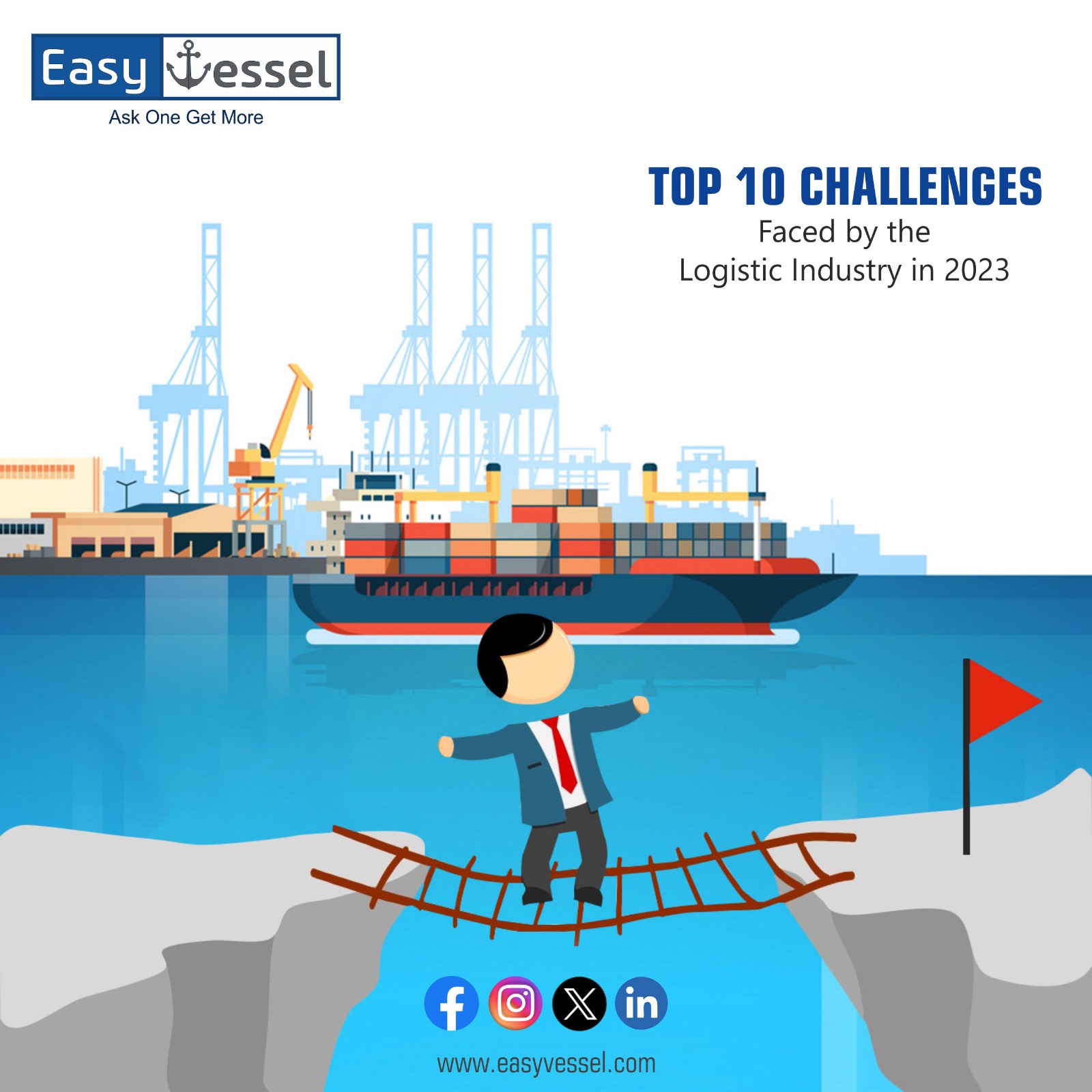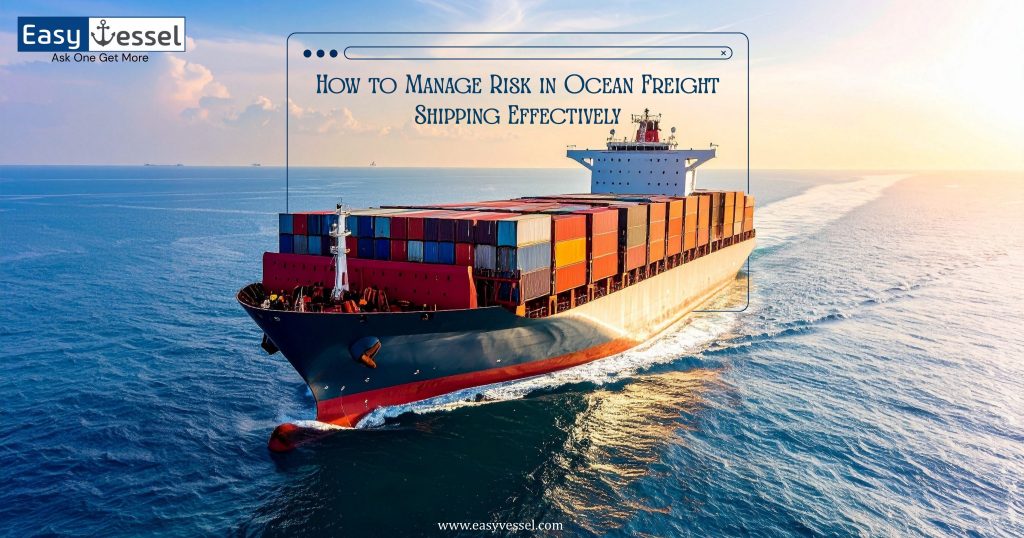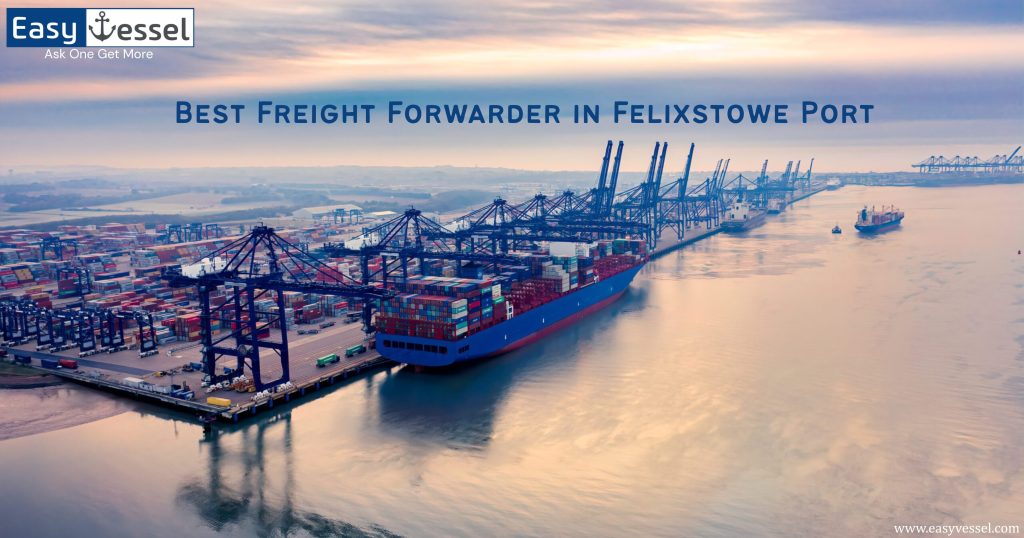What is the logistics industry?
- The logistics industry is all about getting things from one place to another efficiently.
- It involves planning, managing, and coordinating the movement and storage of goods, information, and resources from their origin to their destination.
- Logistic industry crucially ensures that it transports, stores, and delivers products to customers or businesses in a timely and cost-effective manner.
- Logistics includes activities such as transportation, warehousing, inventory management, order processing, and distribution, all of which help products reach their intended recipients smoothly.
- It’s like the behind-the-scenes work that makes sure products are available when and where you need them.
- The logistics industry, which is responsible for moving goods from one place to another, has encountered significant challenges over the years.
- Logistic companies are like the support system for all kinds of businesses in a country.
- They help with moving stuff around, whether it’s from farms, factories, or just getting things from one place to another.
- Imagine how tough it would be for an economy to work without good logistics and transportation.
- Logistics is super important because it helps trade happen and keeps things running smoothly.
- But as time goes on, new technology, what customers want, and the rules that change all make it tricky, even for really big logistics companies.
Top Challenges Faced by the Logistics Industry:
Here are 10 top challenges faced by the logistics industry:
Cost Savings On Transportation:
- Efficient transportation is crucial in logistics. However, rising fuel costs, carrier rates, and the necessity to optimize routes have heightened concerns about cost savings for logistics companies.
- Increased fuel costs result in additional charges for customers, leading to higher overall shipping and freight expenses.
- This impacts the company’s earnings and profits, even when fuel prices eventually drop.
- In logistics industry poor cost control can result in increased expenditures and financial losses for the business.
Enhancing Business Procedures:
- Efficient business procedures are crucial for logistics operations.
- Continuously streamlining processes like inventory management, order fulfillment, and supply chain visibility is a persistent challenge.
- A study reveals that 36% of firms heavily depend on logistics partners for cost savings and process improvements.
- These logistics partners must not only have the expertise to instigate change but also extend their influence beyond the supply chain and operations.
- Moreover, they should maintain financial stability, display adaptability, and be willing to take calculated risks for long-term gains in logistics industry.
Improving Customer Service:
- Boost customer satisfaction through effective communication and rapid problem-solving.
- In today’s dynamic and competitive markets, supply chains have grown complex, and customer expectations have developed.
- When clients place orders, they anticipate faster delivery and higher service quality.
- Customers expect logistics partners to assist them in overcoming challenges and thriving in a competitive landscape.
- They also demand order tracking and real-time updates throughout shipment and delivery.
- Furthermore, they seek the flexibility of expedited freight options like two-day or same-day delivery.
- Deliver excellent service through practical methods.
Relationships with Suppliers:
- Establish strong, enduring partnerships with suppliers to maintain a seamless supply chain.
- The prosperity of any logistics firm hinges on its relationships with suppliers.
- Companies must consistently foster these relationships, keeping suppliers informed and ensuring their contentment with the firm’s advancements.
- It is vital to establish, comprehend, and adhere to mutually agreed-upon standards to better assess current performance and areas for enhancement.
- Efficiently navigate negotiations and collaborations for mutual gain.
Reverse Logistics:
- Master the art of efficiently and cost-effectively handling product returns.
- Returns and exchanges are integral to modern commerce, but managing them efficiently while minimizing costs and environmental impact is a complex task.
- Every e-commerce business requires a reliable reverse logistics system because customers often return unsatisfactory products.
- Ensuring a smooth returns process is crucial to prevent customer frustration.
- Lacking an efficient reverse logistics platform can lead to customer alienation and future business loss.
- However, implementing a reverse logistics plan can be challenging and costly without proper support.
- Explore avenues to recoup value from returned goods.
Shortage Of Drivers:
- The trucking industry grapples with a shortage of skilled drivers, affecting transportation services.
- Explore strategies to ensure a dependable workforce.
- Driver shortages continue to be a pressing concern for logistics companies globally.
- Effectively managing drivers and transporters necessitates precise supply and demand coordination.
- To attract new drivers, shippers should offer amenities aligned with their needs and aspirations.
- Emphasizing the pivotal role of drivers in the company’s growth can foster a more positive relationship.
Lack Of Skilled Manpower:
- Enhance workforce capabilities to align with industry requirements.
- Numerous logistics sectors grapple with a mounting shortage of skilled labor and specialized experts.
- Modern technology has increased the demand for technically trained personnel.
- Nonetheless, many workers are underqualified, overburdened, and lack essential skills, impeding overall efficiency.
- This results in elevated workforce turnover, amplified training expenses, and underperformance in human resource departments within these companies.
- Challenges persist in recruiting and training proficient logistics professionals.
- Meeting the demand for specialized skills in a dynamic industry remains a formidable task.
Government Regulations:
- Complicated and changing regulations in transportation, safety, and trade present compliance challenges for logistics firms.
- These companies must adhere to stringent regulations set by federal, state, and local governments.
- Transportation laws, regulations, and security mandates differ across regions, placing a significant educational burden on company staff.
- Moreover, these regulations curtail the flexibility and autonomy of logistics firms, impeding their capacity to explore alternative opportunities and prospects.
- Effective navigation of intricate legal requirements necessitates expert guidance.
Environmental Regulations:
- Embrace eco-friendly practices to align with environmental standards.
- Seek incentives for sustainable business operations.
- The imperative to cut carbon emissions and embrace sustainability is mounting, resulting in heightened scrutiny of logistics companies’ environmental footprint.
- Expanding transportation and logistics infrastructure requires significant space, contributing to elevated carbon emissions and environmental damage.
- Many logistics firms prioritize reducing greenhouse gas emissions, acknowledging the detrimental environmental effects of large industrial supply chains, as indicated by numerous studies.
- Companies that proactively reduce their carbon footprint thrive, as both partners and consumers increasingly prize environmentally conscious practices.
Technological Barriers:
- Leverage technology’s potential to conquer logistical challenges and dismantle technological barriers for effective supply chain management.
- Staying current with technology trends such as automation, artificial intelligence, and data analytics is essential for competitiveness and efficiency.
- Technology is indispensable for the success of logistics companies, significantly benefiting the industry.
- Nevertheless, businesses frequently grapple with questions like “who will finance it” and “who will execute these tech advancements.”
- Addressing these concerns is pivotal, particularly for logistics companies in developing and third-world nations.
- Moreover, logistics technology can be expensive, with only the largest organizations able to afford cutting-edge solutions.
Conclusion:
- In summary, the logistics industry is essential for global trade, but it faces challenges like cost-saving in transportation, streamlining business processes, meeting customer expectations, maintaining supplier relationships, handling returns efficiently, driver shortages, workforce skills, government regulations, environmental sustainability, and adopting technology.
- Overcoming these challenges is vital for long-term success, especially in developing regions where technology adoption and funding are concerns.
- Adaptability and resilience will be key to the industry’s continued success.
- Easyvessel connects importers and exporters with multiple freight forwarders to get the best freight rate with 0% commission.
Summary:
- 2021–2023 global supply chain crisis By Wikipedia [1].
Frequently Asked Questions
- The logistics industry faces many challenges.
- One big issue is that it’s getting more expensive to move things around because fuel and shipping costs are going up.
- To save money, it’s important to figure out the best and most efficient routes.
- Another challenge is making all the business steps, like handling inventory and orders, work together smoothly.
- In the logistics industry, companies sometimes cut back on training and pay for their workers to save money.
- This leads to problems like a lot of workers quitting, more money spent on training, and the human resources department not doing well in the long term.
- Global logistics in 2023 faces supply chain disruptions, regulatory complexities, and environmental sustainability concerns.
- Cybersecurity threats and cost management challenges persist, while e-commerce demands faster solutions.
- Talent shortages and meeting heightened customer expectations for speed and transparency remain key issues.
- In the transportation and logistics industry, there are problems like not having enough workers, running out of time, and customers wanting more.
- To solve these issues, they’re using things like robots and automatic systems.
Also, they’re focusing more on what customers want and need. - In 2023, transportation and logistics face challenges such as labor shortages, tight schedules, and rising customer demands.
- Innovations like automation and a shift towards customer-centric services are key responses.



